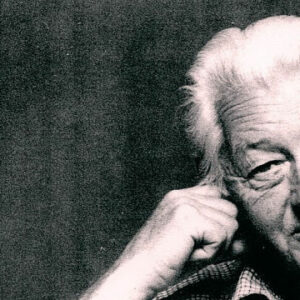Wallace Stegner may have won more literary awards than any other American writer. He is known as one of the best writers in the country. This Pulitzer Prize winner has been writing for more than 50 years and has written more than 24 novels, historical works, and collections of short stories and essays. His writing was mostly about how great the American West was, how fragile the environment was, and how racist people were. Stegner has also had a long career as a teacher of both creative writing and literature, as well as a successful writing career. He has taught at Harvard University, Stanford University, the University of Utah, and the University of Wisconsin. He made the program for creative writing at Stanford University. After he died, the Stegner Fellowship for creative writing was made to honor and remember him. Some of his best-known works are “The Big Rock Candy Mountain,” “Angle of Repose,” “All the Little Live Things,” “The Spectator Bird,” “The American West as Living Space,” “Discovery! The Search for Arabian Oil,” and “The City of the Living: And Other Stories.”
Early years and childhood
He was born in Lake Mills, Iowa, to George Stegner and Hild’s Paulson. His name was Wallace Earle Stegner. He spent most of his childhood in the cities of Great Falls, Montana, Salt Lake City, Utah, and Eastend, Saskatchewan.
In Utah, he was part of an LDS Church’s Boy Scout troop. In 1930, he got a B.A. from the University of Utah. After that, he went to the University of Iowa and got a master’s degree and a doctorate. He went to the Iowa Writers’ Workshop as well.
Wallace Stegner’s Career
In 1937, he published the book “Remembering Laughter,” which had won the publisher’s Novelette Contest years before. This was the first thing he ever had printed in a magazine called “Redbook.”
In 1938, he published a short story called “Bugle Song.” “The Potter’s House,” a short story he wrote, came out the same year. He wrote the books “On a Darkling Plain” and “Fire and Ice” in his later years.
In 1942, he published “Chip Off the Old Block,” a short story. The next year, he put out “The Big Rock Candy Mountain,” a semi-autobiographical novel, “Mormon Country,” a non-fiction piece, and “Hostage,” a short story.
His novel “Second Growth,” which came out in 1947, is about a group of unfriendly natives who become friends with people from a New England village.
He wrote a book called “The Preacher and the Slave,” which came out in 1950. He wrote “The City of the Living: And Other Stories,” “One Nation,” and “Wolf Willow: A History, a Story, and a Memory of the Last Plains Frontier” in his later years.
In 1971, he wrote a book called “Angle of Repose,” which won the Pulitzer Prize. He also wrote a nonfiction book called “Discovery! The Search for Arabian Oil,” which came out in the same year.
In 1976, he wrote a book called “The Spectator Bird,” which won the US National Book Award. In this book, the main character is a retired library worker who gets a letter from an old friend.
Writer in America, a nonfiction book by him, came out in 1982. The next year, he published “Conversations with Wallace Stegner on Western History and Literature,” a nonfiction book.
In 1987, he wrote a book called “Crossing to Safety,” which is considered one of the best books of the 20th century. The book tells the stories of two different couples.
Works of note
The “San Francisco Chronicle” said that his book “Angle of Repose” was the best book written in the 20th century. This book came in at number 82 on the Modern Library’s list of the “100 best English-language novels of the 20th century.”
Awards & Achievements
He won the Little Brown Prize in 1937 for his book “Remembering Laughter.”
For his book “One Nation,” which came out in 1945, he won the Houghton-Mifflin Life-in-America Award and the Anisfield-Wolf Book Award.
In 1967, “All the Little Live Things” won him the Commonwealth Club Gold Medal.
In 1972, his book “Angle of Repose” won the Pulitzer Prize for Fiction.
In 1976, “The Spectator Bird” won him the Commonwealth Club Gold Medal.
In 1977, his book “The Spectator Bird” won the National Book Award for Fiction.
In 1980, the Los Angeles Times gave him an award for his lifetime of work.
In 1990, he won an award from the P.E.N. Center USA West.
Personal History and Legacies
He got married to Mary Stuart Page in 1934. Page Stegner, who is his son, also writes.
He died in Santa Fe, New Mexico, on April 13, 1993, at the age of 84. He had been in a car accident the month before.
The Stegner Prize in Environmental or American Western History was published by the University of Utah Press in 2010. This was made to honor him.
The Wallace Stegner Lecture is held at Lewis-Clark State College in Lewiston, Idaho. It is named after him and is held in his honor.
In his honor, the two-year Stegner Fellowship in Creative Writing at Stanford University is named after him and given out.
This well-known and Pulitzer Prize-winning author wrote “The Big Rock Candy Mountain,” “Angle of Repose,” and “All the Little Live Things,” among other works.
Estimated Net worth
Wallace is one of the wealthiest historians and is on the list of the most well-known historians. Wikipedia, Forbes, and Business Insider all say that Wallace Stegner is worth about $1.5 million.


